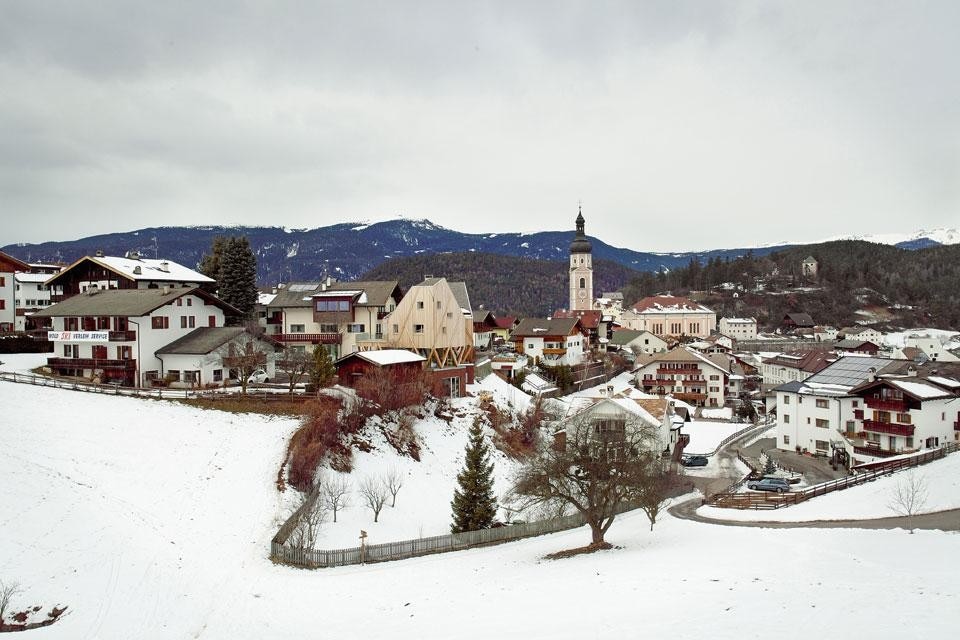"The foreigner feels strengthened by the distance that detaches him from the others as it does from himself and gives him the lofty sense not so much of holding the truth, but making it and himself relative while others fall victim to the ruts of monovalency."
—Julia Kristeva, Strangers to Ourselves, Columbia University Press, New York 1988
Before setting off from Milan to Castelrotto, in Trentino-Alto Adige, we did well to examine the photos of the artist Hubert Kostner's home-atelier, designed by Matteo Scagnol and Sandy Attia (modus architects). As a result we could approach the building without being disturbed by preconceived notions derived from Alpine architecture of the past 30 years. Indeed, only recently has the alpine landscape finally witnessed the introduction of designs that restore stylistic autonomy to individual architectures within the complexity of their urban contexts. In such places, the design of private houses had for years been almost exclusively influenced by holiday-making as a promotion of architecture.
For too long these zones had received a "crop" of constructions that were apparently in harmony with local styles. This trend was driven by an architectural verve that replicated villages and buildings which were almost too alike to tell them apart, gradually producing something that seemed more like a collage of picture postcards.
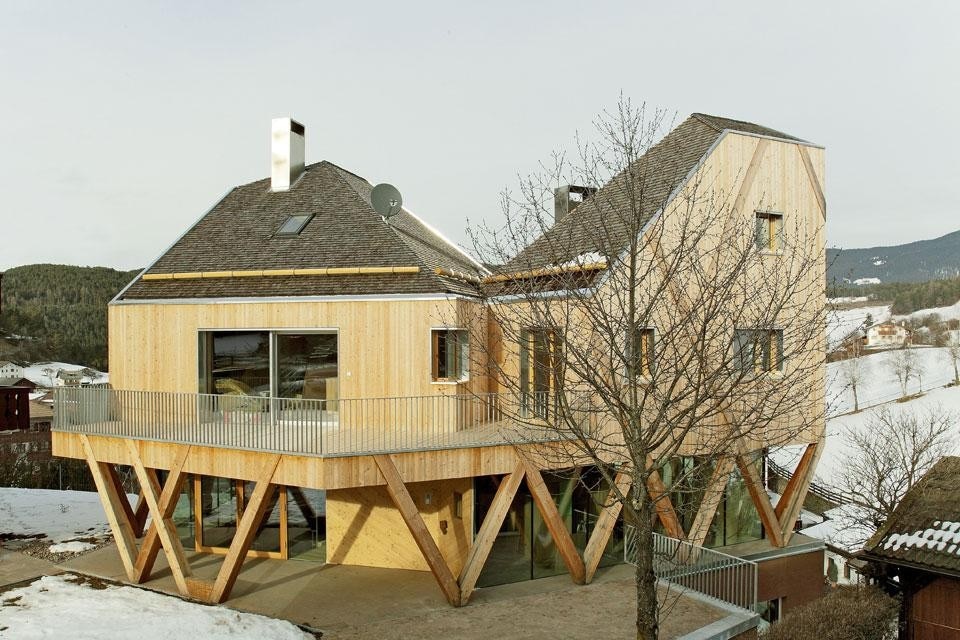
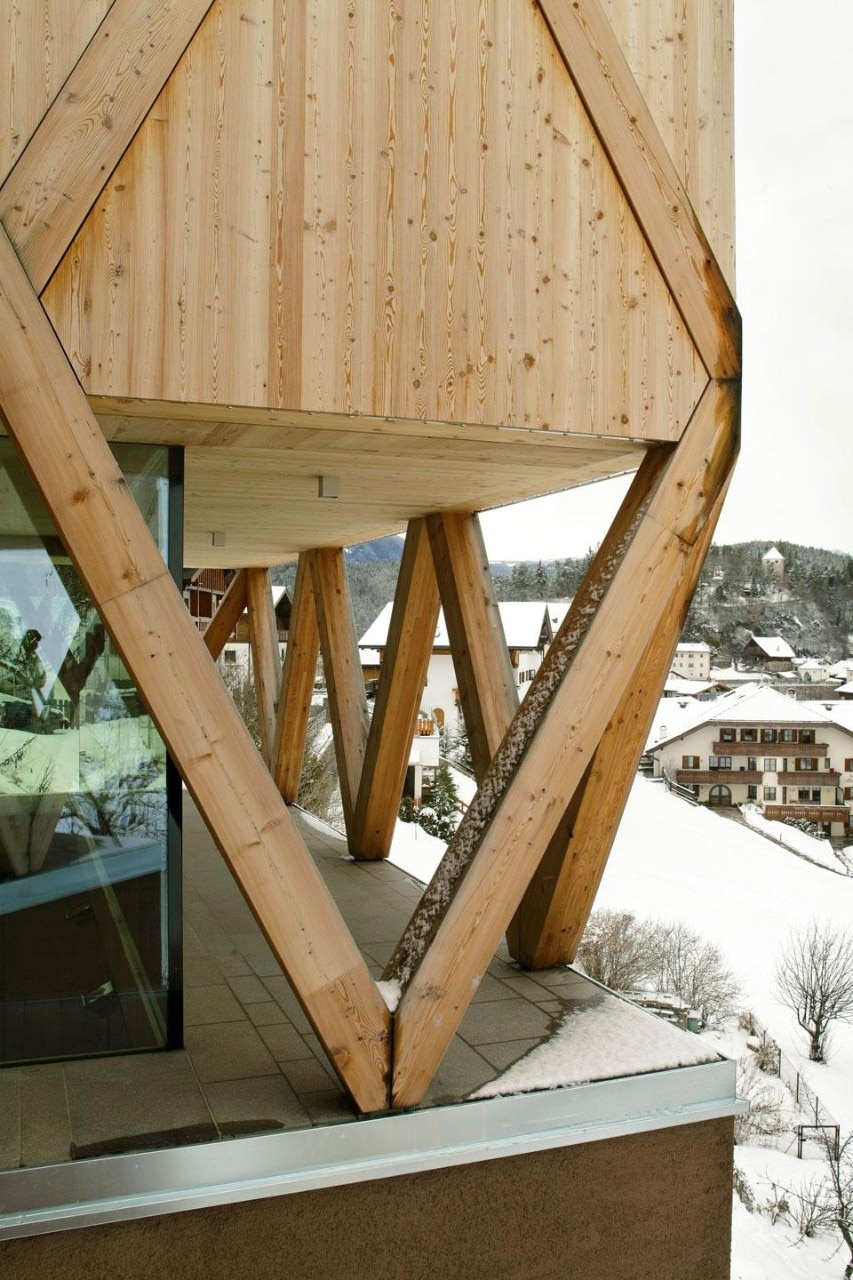
The design led to a construction split into two entities, rising like suspended mini-mountains, both to be climbed
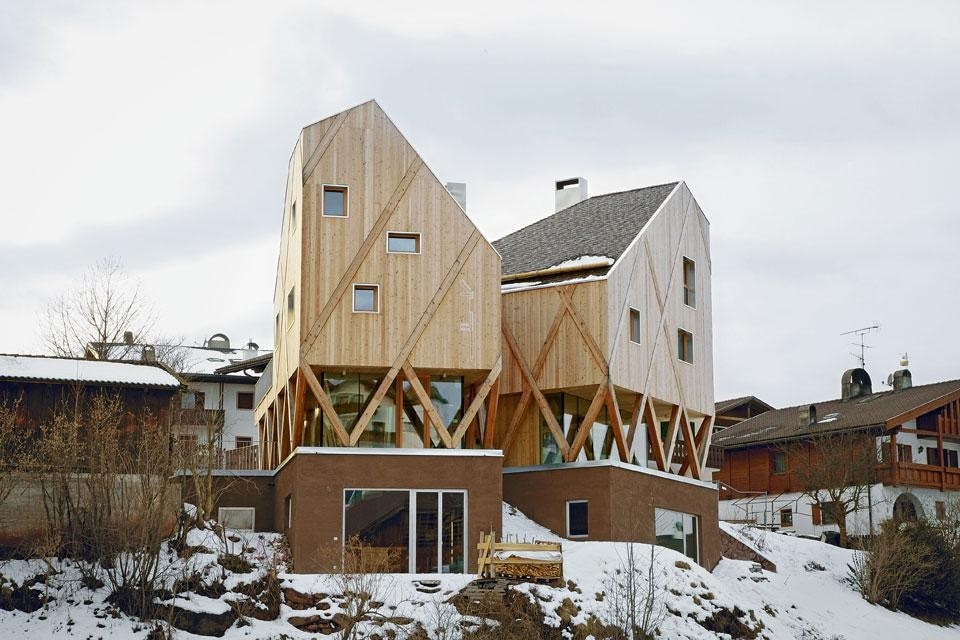
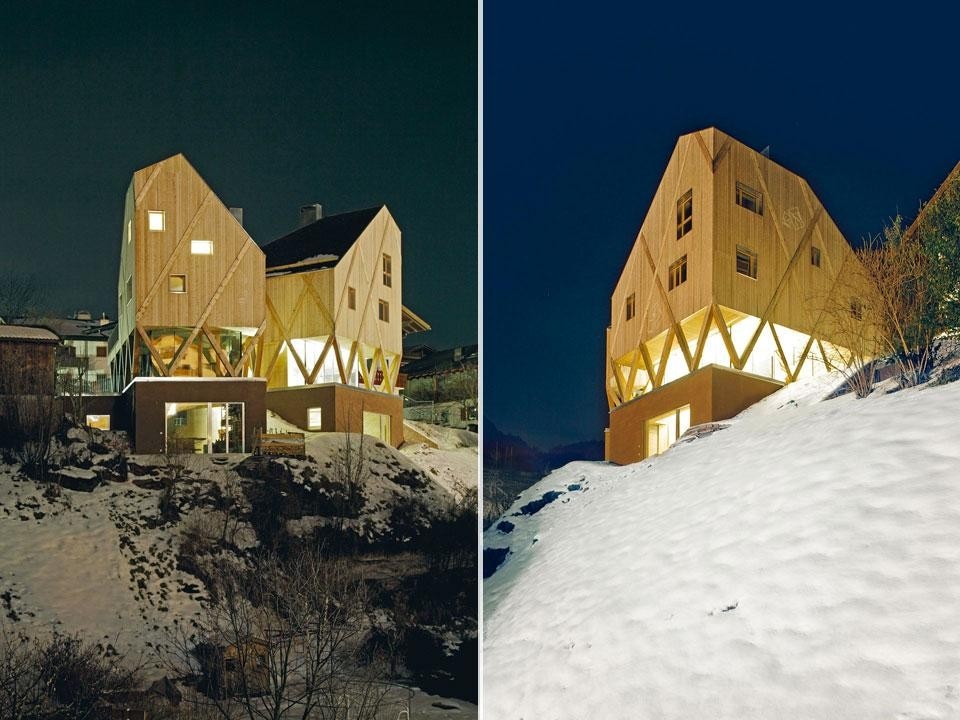
The design led to a construction split into two entities, rising like suspended mini-mountains, both to be climbed. They suggest the idea of seemingly roofless peaks, set against a background like that of the Alps in which roofs practically encapsulate the image of mountain architecture. The two built summits recall the typical local farmhouse, the masi, often built in pairs. This prompted the architects to propose distinct volumes, while highlighting the apparent interference of this building set on a small plot of land between old houses. It's as if it tells the story of a space that has received an element which redesigns the existing context through its fragmentation.
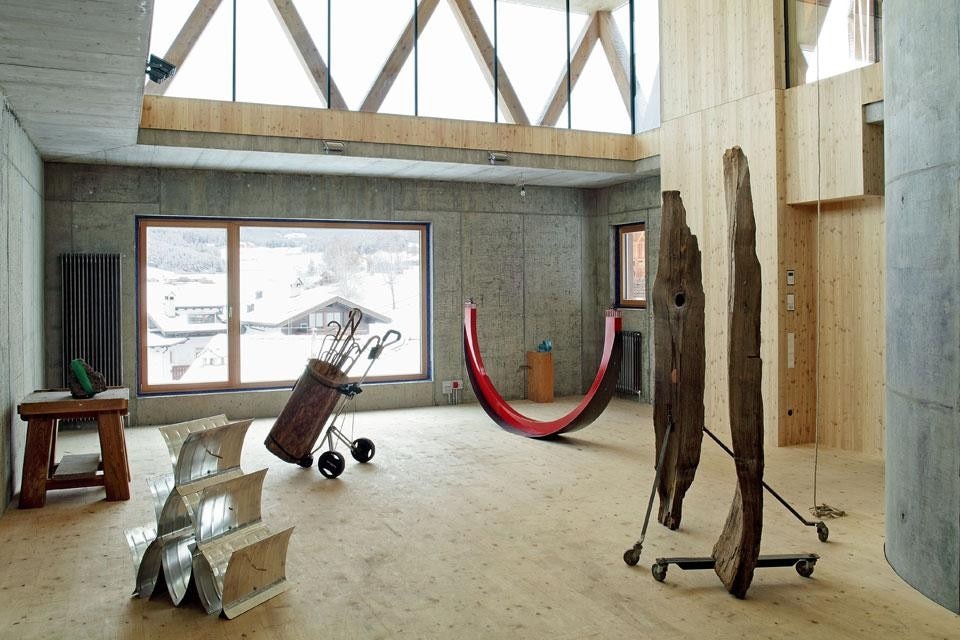
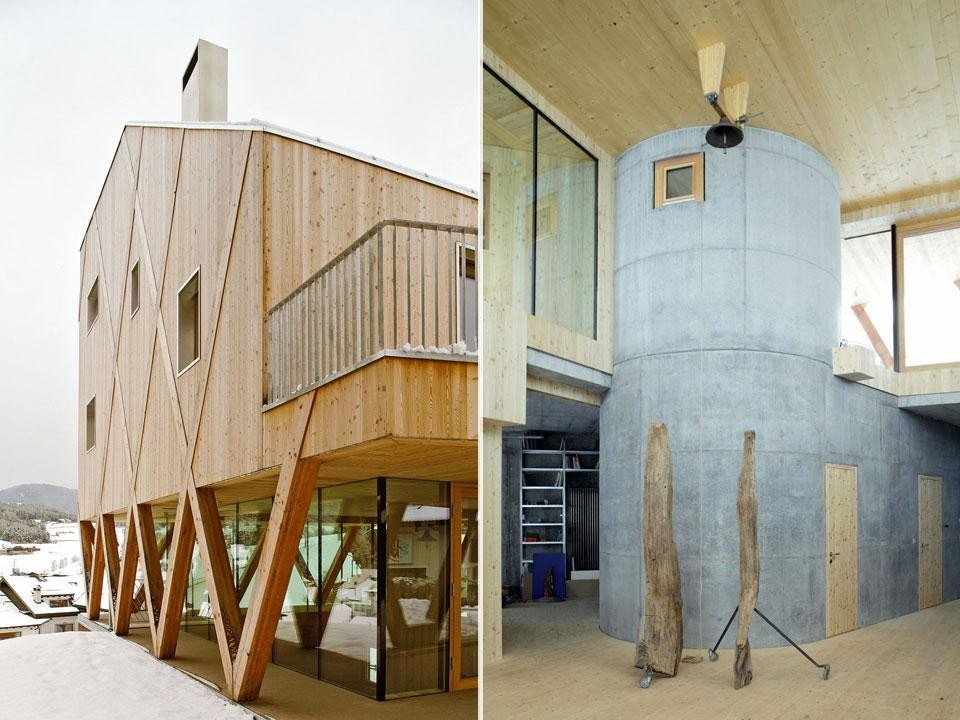
As Kostner quips, if necessary the house could be demolished in half an hour, using a chain saw to cut the X-beams that hold it together. Which almost makes it a non-permanent feature of this unusual and remarkably un-alpine landscape. Luciano Bolzoni, Architect and scholar of Alpine culture and architecture
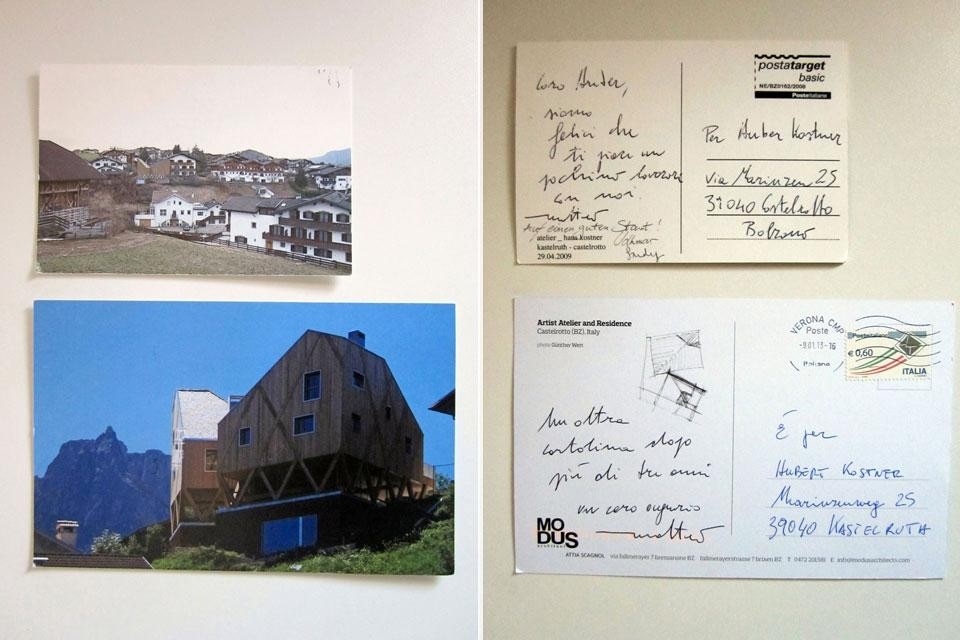
Architects: MODUS architects, Sandy Attia, Matteo Scagnol
Design Team: Volkmar Schultz, Samuel Minesso, Veronika Lindinger
Structural Engineering: Rodolfo Senoner
Construction Supervision: Matteo Scagnol
Plant Engineering: Josef Reichhalter
Manufacturers: Urban Winkler (concrete structure); Ludwig Rabanser (timber structure); Wolfartec (windows); Kometal (metalwork); Josef Rier (furnishings)
Client: Hubert Kostner
Altitude: 1,075 m
Site Area: 934 square metres
Underground Built Area: 410 square metres
Aboveground Built Area: 160 square metres
Atelier Floor Area: 200 square metres
Residence Floor Area: 200 square metres
Design Phase: 04/2009 — 06/2010
Construction Phase: 04/2011 — 12/2012



